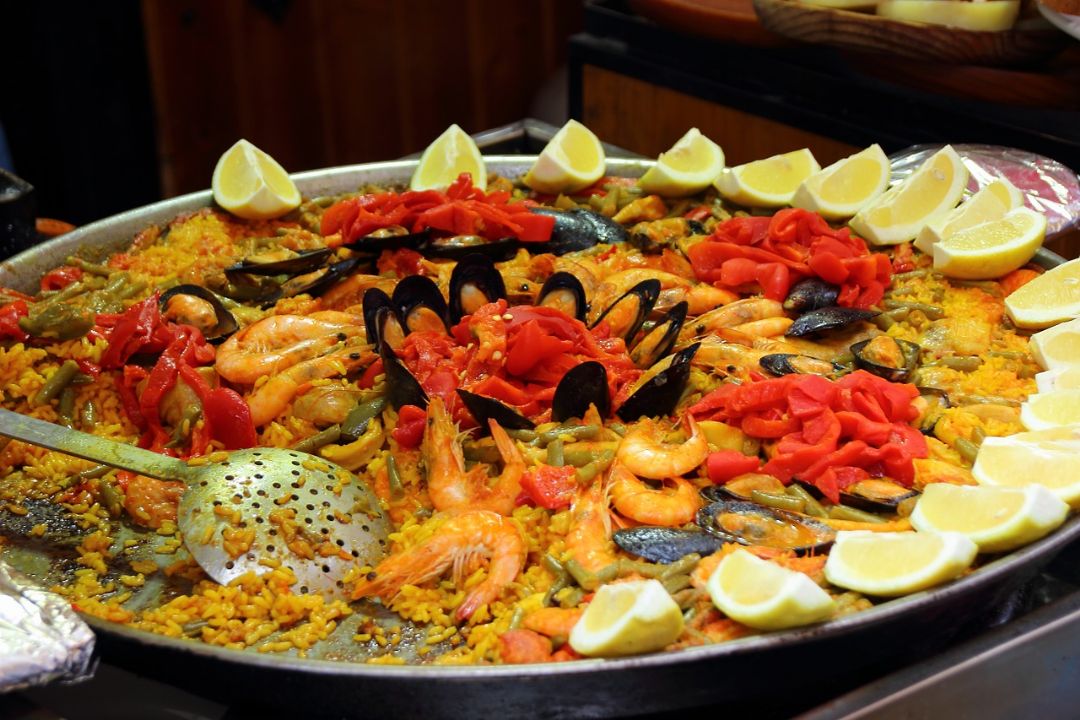
Buying Spanish Property: Traditional Spanish Food
1/14/2017
When you buy a property in Spain, you will not only be enjoying the sunshine and the laid-back Spanish lifestyle, but will also have the opportunity to explore the local cuisine. The Spanish love their food and drink and take it very seriously. While it is certainly possible for Brits to enjoy a full English breakfast or traditional Sunday roast in the main resorts, Spanish cuisine remains very traditional and is one of the pleasures of living in this beautiful country. Breakfast In Spain, breakfast is a light meal. Spaniards may start the day with a sweet roll and jam, or toast accompanied by cheese or a slice of ham. The drink of choice is a large bowl of café con leche. Throughout Spain, churros are a popular treat. These lightly-fried doughnuts are flavoured with cinnamon or honey. Lunch Lunch is the main meal of the day and it is no wonder that the Spanish linger over it and also take a siesta afterwards! After starting with a soup, salad or tortilla, you will move on to the main course, perhaps grilled meat or seafood with chips, accompanied by wine or water. This is followed by a dessert such as flan, a creamy milk pudding, or fruit, and you will finish up with coffee. Restaurants usually charge from between €7 and €10 for a three-course lunch. Tapas Tapas are popular in the evenings and at weekends, when you can wander from bar to bar, nibbling a few tapas at each. The menu is varied, but favourites include slices of succulent Serrano ham, wedges of cold tortilla, and meat fritters. Tapas may be accompanied by a cool San Miguel beer, a glass of sangria or a chilled Amontillado sherry. Dinner Dinner in Spain is a lighter meal than lunch, perhaps consisting of soup and an omelette, or paella, a delicious combination of rice, shellfish and chicken, flavoured with saffron. The Spanish like to dine late - it is not uncommon to see families sitting down to eat at 10 pm, especially during the summer. Wherever you are considering buying property in Spain, a little research is sure to unearth excellent local restaurants, and locals are usually only too happy to help with their own recommendations. ImmoVario presents the offer of local real estate agencies in touristic areas of Spain. So please have a look elsewhere on this website to see the available options!
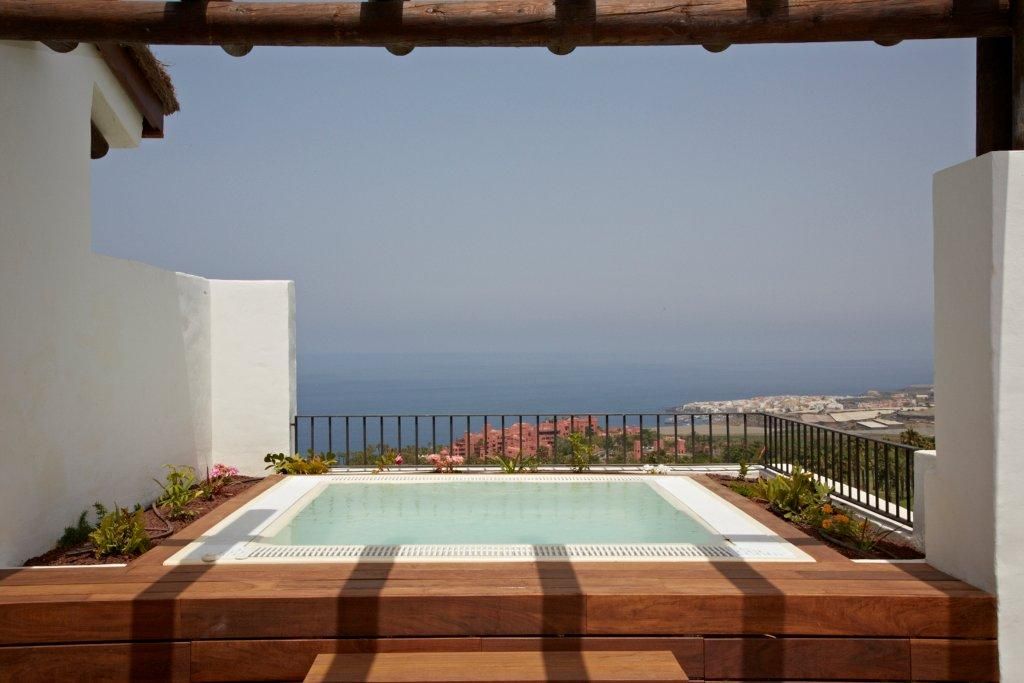
Tenerife is simply pure enjoyment
12/21/2016
Enjoy the luxury of Tenerife Tenerife is a beautiful island off the West coast of Africa that belongs to the Spanish Canaries. It is surrounded by a beautiful blue sea that not only allows you to snorkel and dive, but also boasts the possibility of open water whale and dolphin excursions! From the coast you can see the top of the Teide volcano, which towers proudly above all. There are beautiful national parks full of greenery and exceptional nature and a selection of fascinating tropical zoos. The rhythm of this island and the friendly atmosphere makes you want to live here. A holiday home in Tenerife Your own holiday home in Tenerife is within touching distance with our wonderful selection of homes over here, for instance in the "Abama" resort. This resort includes detached houses with swimming pools, breath-taking views over the ocean to the other islands and an oasis of green with palm trees surrounding the complex. At the resort you can play tennis and enjoy great golfing at the private golf course. Prefer the beach? No problem! Put on a swimsuit, grab a towel and take full advantage of the private beach exclusive to resort residents. If that is not a luxury what is! Apartments & villas The Abama resort consists mainly of luxury villas yet also boasts several luxury apartments. The only difference is that the apartments do not have their own swimming pool but they do have a spacious, private balcony so you can enjoy even more breath-taking views. Additionally you are able to utilise the entire resort facilities. This means your mail is stored at reception, you can enjoy buffets for breakfast and dinner and there are washing machines and other facilities available to make your stay more enjoyable. In addition, the resort strive to make you feel at home on the island and the resort and to make your stay as enjoyable and as relaxed as possible. There is even an annual Owners & Cup Gala weekend of festivities! If you dream of owning your own property on a tropical island whilst staying close to home and the EU then you are at the right place in Tenerife. At only four and a half hours flight from the UK, no visa and no vaccination program, Tenerife is simply pure enjoyment! Here you can find an overview of properties for sale on Abama-Golf!
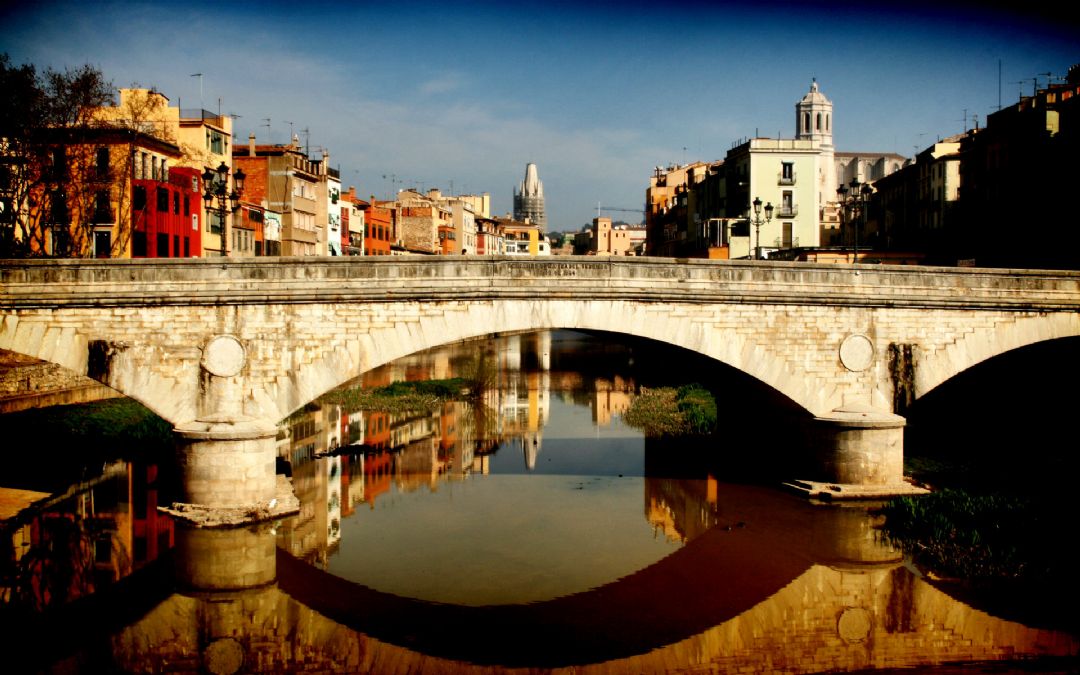
Buying a home near Girona: a multi-faceted town.
12/8/2016
If you're a fan of both beaches and parasols as well as ski resorts and après ski, Girona could be the perfect place to buy your holiday home. Located near the Spanish border with France, Girona is perfectly placed for those who love skiing in winter and sunbathing in summer. Its proximity to the Pyrenees makes it easy to get to for a few days away in a ski resort and in summertime you have the whole of the Costa Brava, which stretches from Portbou to Blanes, to enjoy, often without the crowds that can be found further south. Eat and drink like a local Enjoy a glass of locally-produced Cava with your meal. Local delicacies include Butifarra, a sausage that was created in Medieval times and is still eaten today, the Xiuxo, a deep fried crema catalana filled pastry and of course, the crunchy, delicious Girona apples that grow in the brilliant sunshine that this region enjoys. The City of Four Rivers Girona is known as the The City of Four Rivers because it is where four rivers meet. One of the main rivers, the Onyar divides the old part of the city from the new. The old part of the city was founded by the Romans in the 1st century B. C and was later home to Jews, Arabs and Christians. Each culture has left its mark on the city. Inside the Força Vella (the walled old town) we recommend a visit to the Cathedral which has a Gothic nave and a fortress-like appearance. It's a whopping 91 steps to the entrance but it's worth it once you get there. Learn about the Jewish history of the town at the Museum of Jewish History. The Jews were expelled from Spain in 1492 and this museum provides a fantastic insight into the people who lived in the streets and tiny houses of the "Call", the Jewish area. Getting there Girona has its own airport which is easily accessed by low cost carriers from numerous European hubs. It is also within an hour's drive of Barcelona, offering plenty of choice when it comes to booking some time in your home away from home. Looking for a house in this lovely area? Please have a look on our website immoVario.com to find a nice overview of property for sale in the Costa Brava. Sources Telegraph.co.uk Spain.info
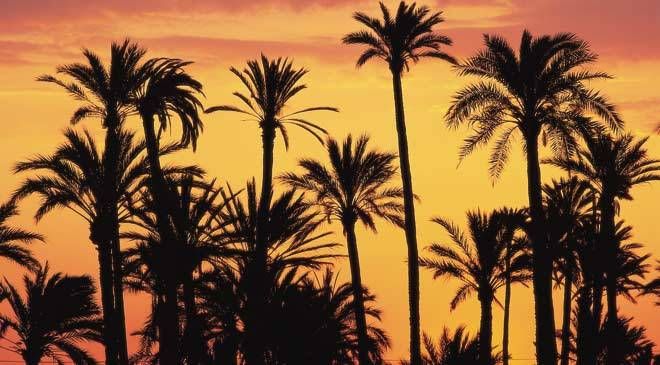
Step out in style from your home in Elche
11/12/2016
Fantastically located between both Murcia and Alicante airport, Elche is extremely popular for homes in the sunshine. The third largest city in the Valencian Community after Valencia and Alicante, it has all of the amenities of the largest cities in the region, and some say, a more Spanish feel given that unlike most other towns and cities in the area, its main industry isn't tourism. Elche is instead, famous for its shoemaking. The city produces over 50% of the shoes made in Spain - those that stay in Spain and those that ship to other parts of Europe and indeed the world. With over 1,000 shoe factories, it's the ideal place to buy a home if you have always dreamt of a walk-in shoe wardrobe at affordable prices. Gioseppo, Hispanitas, Pikolinos and Panama Jack have factories here and their outlets can be found at the Ruta Outlet, a short drive from the centre of town. Pura Lopez is one of Elche's most famous designers of high-end shoes. Her clients include Kylie Minogue, Lea Michele and European royal households. In addition to Elche's wonderful shoe production, there are some interesting places to wander around in this lovely town. Visit the market on Monday mornings to stock up on fresh fruit, vegetables and local produce. Top of most people's lists is the Elche Palm Grove, a UNESCO World Heritage Site since 2000, which has between 200,000 and 300,000 palm trees to see. Within the grove you can visit the Huerto del Cura (Priest's Orchard). It's a smaller plot of land, created and owned by a priest until 1918 and today it is a mix of plants from various places, all growing together in a unique location. There is a small café here or take a picnic and enjoy the shade of the trees on a hotter day. The Altamira Castle which dates from the 12th and 13th centuries, is located near the Elche Palm Grove making it ideal to combine with a visit to see the plam trees. It has had various uses over time including as a prison during the Spanish Civil War and as a town hall in more recent times. When you simply want to relax on a beach, there are two main beaches just 12km from Elche at El Arenals del Sol and El Carabassi as well as the beaches at El Pinet La Marina, Les Pesquers and El Rebollo which are popular for surfing and even diving excursions. Elche is a fantastic place to visit for a day from your home on the Costa Blanca and we also have a selection of fine houses there for those who want to live in a town with a more Spanish feel: property for sale Elche ! Sources: Visitelche.com Whc.unesco.org
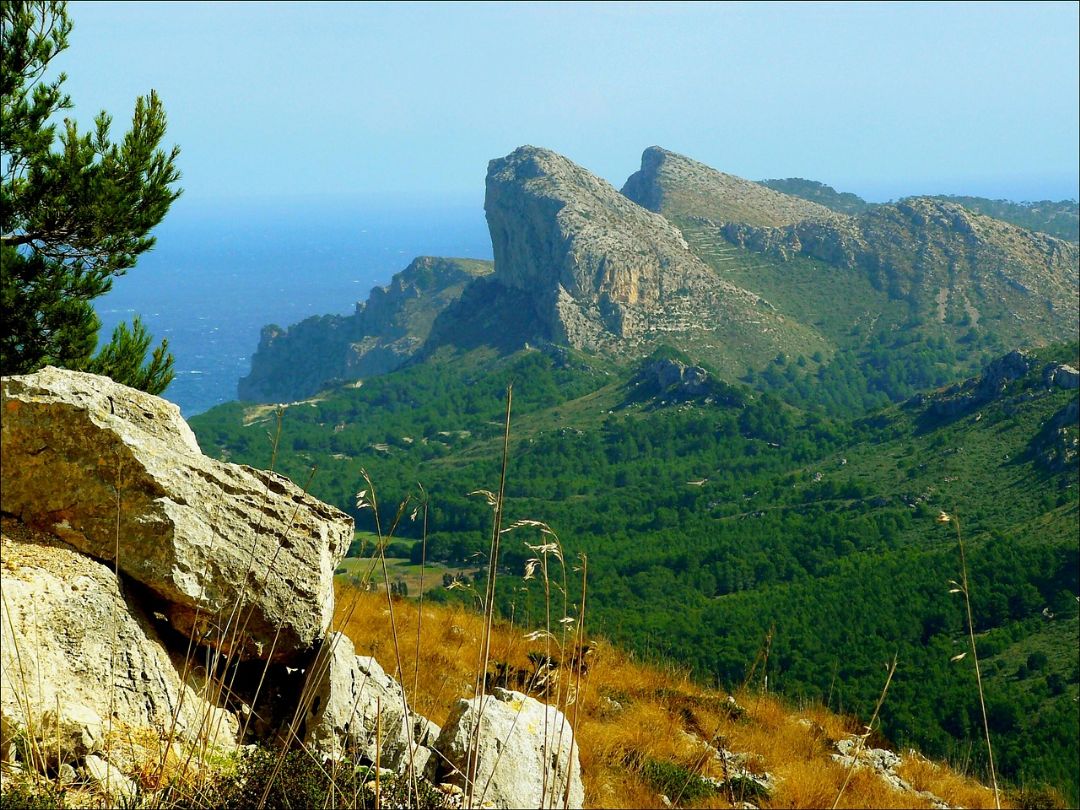
Buying property in Mallorca: Paradise in the Med
11/3/2016
Mallorca (or Majorca), a Spanish province located in the Mediterranean Sea, just off the coast of Spain, is the largest of the Balearic Islands archipelago. Palma de la Mallorca, the island's capital, is also the capital of the autonomous community of the Balearic Islands, which includes Ibiza, Menorca, Formentera and Cabrera. Whilst the Balearic Islands are very popular with tourists from EU countries, travellers from both US and Canada also flock to the islands for sun, sand, relaxation and good food. Mallorca is an ideal holiday destination, and the island's vast array of accommodation, from luxury five star spa hotels to affordable family lodging, ensures holidaymakers are very well catered for, whatever their budget. For the tourist, Mallorca has much to offer with an abundance of sandy beaches, excellent shopping in Palma and interesting local markets dotted around the island. The Cultural Landscape of the Serra de Tramuntana, a UNESCO World Heritage site, and the magnificent 14th century Gothic Cathedral in Palma are also popular attractions. The old town of Alcudia, the charming Puerto de Soller and the famous Soller train, which runs between Palma and Soller and offers breathtaking views of the mountains and countryside, and the spectacular and awe-inspiring Cuevas del Drach (caves of Drach) are also popular visitor destinations. Whilst you can opt to visit the numerous interesting sites and attractions the island has to offer, Mallorca is also a place for relaxation. You can bask in the sun and top up your tan, enjoy a round of golf or a luxurious spa treatment, bathe in the sea and, in the evening, dine at one of the many renowned restaurants on the island. Understandably, many UK nationals choose Mallorca as the destination for their second home, or even their main home. With an enormous selection of property for sale in Mallorca, potential buyers are spoilt for choice. Houses and apartments for sale in Spain in general are plentiful as well, giving the buyer a choice of affordable properties in popular areas. For details of properties currently available, check out our website www.immoVario.com and click on the link Houses for sale Spain or Apartments for sale Spain. Our website link, Land for sale Spain, gives details of land currently available. This is often an ideal option for those wishing to make Spain their permanent home and who wish to design their own unique accommodation. As well as being an idyllic place to live, with the increasing demand for holiday accommodation, Mallorca is also an excellent property investment location for those who wish to rent out their property to holidaymakers when it is not being used.
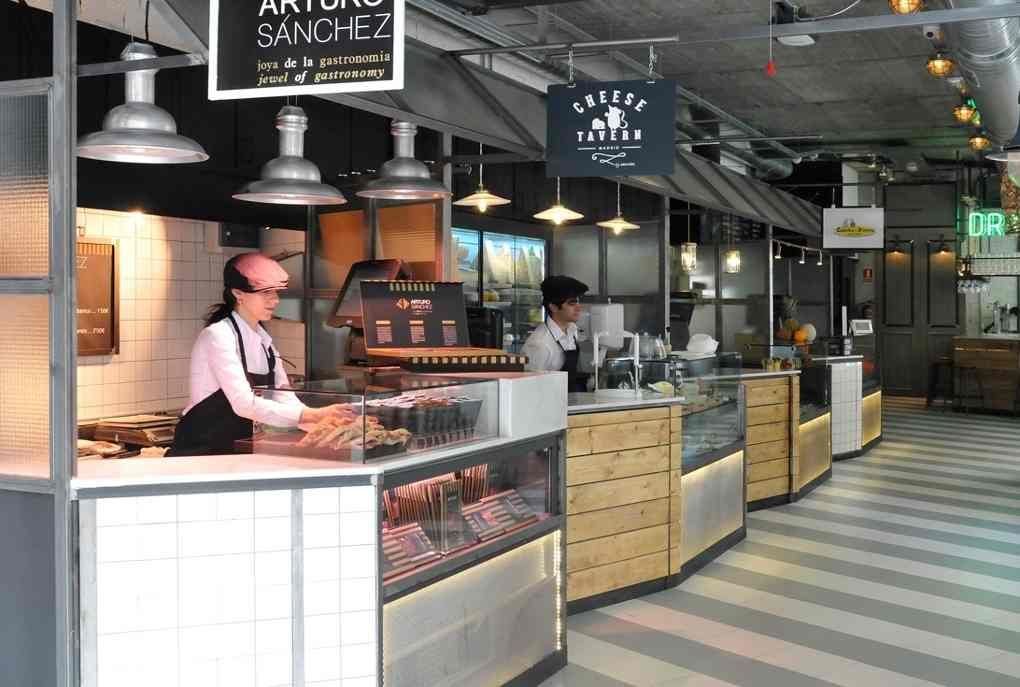
Gourmet Markets to tempt your tastebuds
10/22/2016
Gourmet markets have seen a rise in popularity across the world as the provenance of the food we enjoy has become more and more important. Food miles, humane treatment of animals and the importance of shopping locally has enabled markets to reinvent themselves for a new customer base. Spain's gourmet markets are no exception. Often housed in renovated market premises, some saved by local communities from demolition, these new places to eat offer a window into Spain's thriving, and of course, delicious gourmet food scene. Here's our selection of the best for where you live, or for when you fancy a few days away in another city. Valencia Valencia boasts not one, but two fantastic markets located in the city centre for you to enjoy from your home on the Costa de Valencia. Mercado Colón is a true Valencian gourmet paradise with all kinds of food available. From fusion cuisine to itsMichelin-starred restaurant or the local horchata, this market is one to visit if only to feast your eyes on the architecture. Don't forget to check out the Mercado Central or Mercat Central which has over 8,000 square metres of stalls selling fruit, vegetables, meats and dried fruit as well as cafés for those days when you want to enjoy a beer or a local wine with table service. Costa del Sol If your holiday home is on the Costa del Sol, why not take a day or two to head further afield on the train which takes you from Málaga to stunning Sevilla in just under two hours? Once there, head towards the river where you'll find the Lonja del Barranco market. With fantastc views over the Triana neighbourhood and designed by Gustave Eiffel in 1861, its stalls have seafood, cold meats, cheese and even sushi as well as cooking demonstrations, workshops ad live music. Madrid Last but not least, Spain's capital city has seen a surge in gourmet markets with the most popular of those being Mercado San Miguel. If you head to Madrid for a short weekend or on business, make sure you stop in at this wonderful market, right in the city centre. There's an oyster bar, a Vermouth bar and even a Mexican stall making tacos with the true tang of Mexican cuisine. It's always busy so if you spot a stool, grab it quickly and tuck into tapas with the locals and tourists alike. Click at this link to see our offer of property for sale in Spain if you want to find your dreamhome in this wonderfull country! Source: Spain.info/en/top-10/mercados-gastronomicos-gourmet-gastrospain.html Theguardian.com/travel/2015/jan/29/top-10-food-markets-madrid-spain
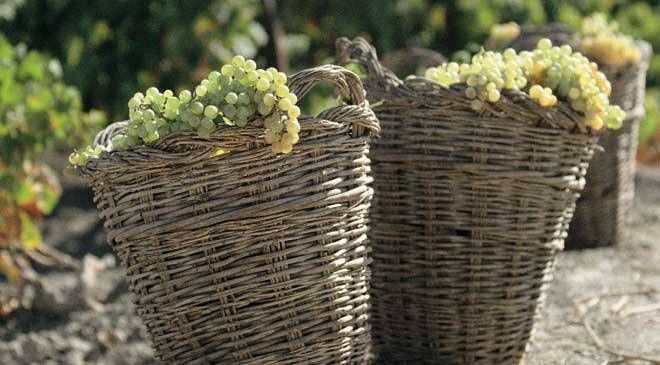
The grape escape! The beginnings of a great wine
10/6/2016
Across the wine-producing regions of Spain, the grape harvest is in full swing. Winemakers are carefully planning which vineyard to pick next, studying the weather and overseeing the grape harvest as it comes off the trucks and onto the sorting table before destemming, crushing and first and second presses of grapes take place. The grape harvest in each region starts on a different date every year. A number of factors are taken into account, including weather conditions throughout the year, since the last period of rain, for example; the type of grape; the type of wine that a winery wishes to produce, e.g, a lighter, more floral Verdejo will be made from grapes picked earlier than a rounder Verdejo; the terroir of the vines and also market demands. If it’s been a great year for the production of quality grapes, demand for fine wines will be higher, and those demands are there to be met by any commercial winemaking business! Grapes can be picked using two methods; using machines and by hand. For some of the finer wines, or for grapes which come from old vines, the grapes tend to be picked by hand. That’s not to say that grapes picked by machine are of a lesser quality, it probably just means the vines were planted using a more strategic approach to winemaking. Once picked and sorted the grapes are destemmed and pressed. The juice is run off into fermentation tanks where the juice ferments until alcohol is produced (a result of the chemical reaction of the yeast on the skins of the grapes) and a liquid that is starting to resemble what will ultimately become wine is produced. Once the wine has fermented to the required level, the winemaker and management team of the winery will decide how much should be bottled, aged in casks and when the wine should be release, taking into account local rules for ageing and release. Visit the Wines of Spain website for more information on the wines that Spain produces and to book a tour of a local winery. Because we select holiday homes and apartments in the finest regions of Spain, we often find that these regions also produce great wines. After all, a great terroir for grapes means a great terroir for your home away from home! Whether you enjoying sipping a D.O Catalunya wine at your property in the Costa Brava or a D.O Málaga wine at dinner at your property in the Costa del Sol with friends and family. So why not have a better look at our website to find your own private property in Spain. Sources: Spain.info Spainisculture.com Foodswinesfromspain.com
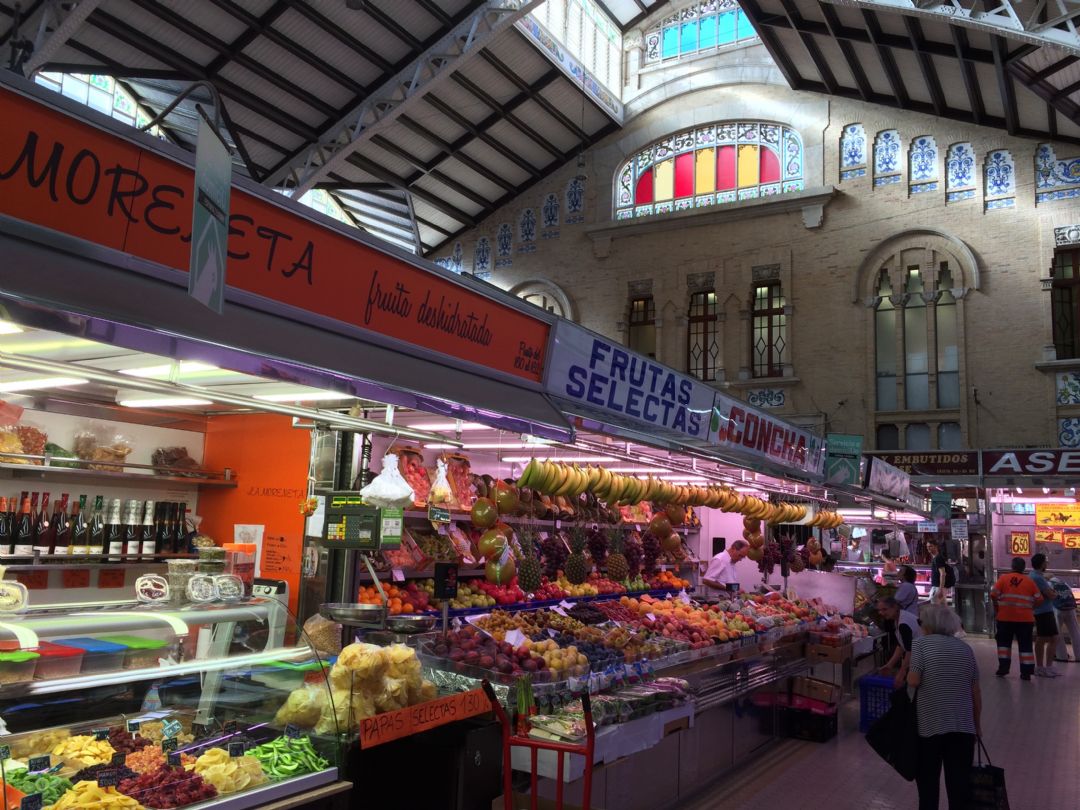
A true home away from home in Alicante
9/23/2016
The Costa Blanca was among the first of the Spanish Costas to take off during the tourism boom of the 1950s and since then its hasn't looked back. Once sleepy little fishing villages, the Costa Blanca is now a booming holiday and expat magnet with something for everyone. As a holiday or expat homeowner looking for a life in the sun, Alicante and the coast around it is ideal for all lifestyles and ages. There is a modern, well-serviced airport, located just 9km from the centre of Alicante, with low-cost flights arriving daily from large and small European local airports. The expat communities in and around Alicante have been there for many years, with bi-lingual schools the norm and easy access to your favourite products from home. British, Dutch and German communities are the easiest to find here so there's always someone on hand for the day-to-day procedures you may have to deal with. Alicante itself is ideal for a day out from your holiday home in Dénia, Jávea or Benidorm. We recommend a visit to the San Nicolas Cathedral, a famous landmark built in a Baroque style which has been restored in recent years as part of a wider city project to promote Valencian art and heritage. Santa Barbara Castle is located on Mount Benacantil at a height of 166m and offers great views of the city. It has its own museum with exhibitions that change regularly. Another fantastic museum is the MARQ, a museum dedicated to the archaeology of Alicante where you can find out about local history through a series of exhibitions and audio-visual learning tools. Take a walk on the famous Explanada de España. Designed by architect José Guardiola Picó, the esplanade's pattern reflects the waves of the Mediterranean Sea and includes an art market, cafés and bars. 6,000,000 tri-colour tiles were used for the design of the esplanade which runs parallel to the city's marina. To celebrate and party like a local, head to Alicante on the evening of the 23rd June when the bonfires of San Juan take place. Fantastic frework displays, music and colour fill the city as it officially celebrates San Juan and the coming of summer. Please have a further look on this informative, easy to use website immoVario.com which gives details of available properties for sale in Alicante! Sources: Aena.es Alicanteturismo.com Theguardian.com/travel/2006/jul/20/spain.hotels Also have a look at Airport-alicante.net to see the newest information about Alicante-Elche Airport.
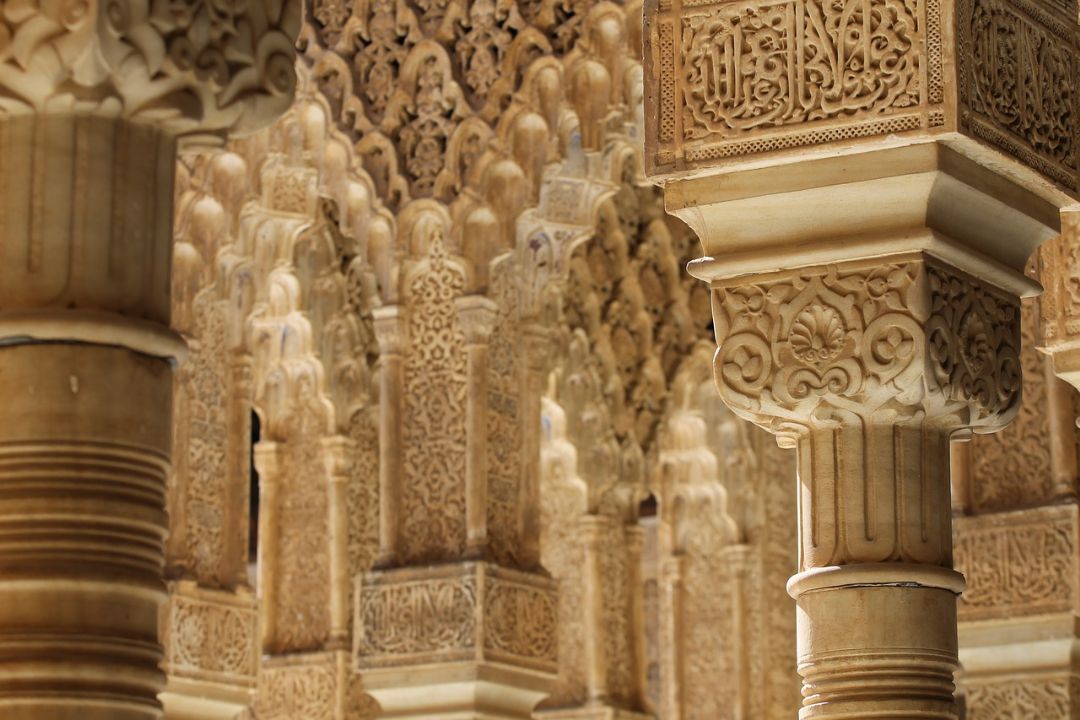
A blend of Spanish and Moorish history
9/9/2016
Granada and Cordoba, two Andalucian cities famous for their Moorish buildings and quarters, succeed in combining the arts of the Arab world with both old and new Spain. Easy to get to and see in a day from your home on the Costa del Sol, we really recommend you stay at least one night to fully enjoy the food, culture and sights in these two cities. Granada Famed for the Alhambra, Granada is steeped in Moorish history with the fascinating tea rooms of the Albaicin offering a welcome respite for the weary walker who has made their way up to the Alhambra for a day taking in some culture. The Alhambra should be top of your list of things to see (book well in advance), but also make sure you check out the view from the Mirador San Nicolas. The mirador affords those who make their way up the hill with stunning views over the city and across to the Alhambra. Tapas are the only meal you'll need in Granada, with it being one of the few cities in Spain where they are included in the cost of the drink. Head to Plaza Nueva for the best places to enjoy tapas with an ice cold beer, a Sherry or a glass of Vino Tinto de Verano - a mix of red wine and lemonade, designed to cool you down on sunny days. Cordoba Cordoba is not quite as famous as Seville and Granada and so you'll find it's less touristy and a lot less crowded. The Mezquita, a mosque that has been converted into a Catholic church is a beautiful combination of two religions. The Moorish red and white arches almost frame the Catholic reliquaries, with the sun streaming in through the stained class windows, further enhancing the beauty of this place. Take a walk through the surrounding Jewish quarter and watch the world go by at the Plaza del Corregidor which is where the locals hang out on a warm evening. Just a short walk from the Roman bridge in one direction and a Roman temple in the other, it's an enormous town square with cafés and restaurants strategically placed under the arches serving local food and drink until the small hours. En route back home, head to Medina Azahara, a city palace which was once the stronghold of a self -proclaimed caliph who, according to legend, named it after his favourite wife. Both cities boast temperatures in the mid to late 30s in the peak of summer so make sure you take plenty of water and sun cream. With our selection of property for sale in the Costa del Sol, potential buyers are spoilt for choice. For details of properties currently available, check out our website immoVario.com Sources Alhambradegranada.org/ Theguardian.com/travel/2008/mar/13/granada.foodanddrink.tapas Catedraldecordoba.es/ Medinaazahara.org/

Spanish music near your holiday home
8/22/2016
From Flamenco to Sevillanas to Sardana, traditional Spanish music has a rich and ever evolving scene that is inextricably linked to dance and entertainment. Flamenco is probably the most famous of Spanish music with its world-famous dresses, that signature beat and the almost obligatory guitar player driving the dance forward from melancholy music to upbeat rhythms and eye-wateringly fast dance steps. Whether it's a solo act or a group, Flamenco is generally easy to find and enjoy in local villages, tourist resorts and even at local festivals. Flamenco is deeply rooted in Andalucia's history and heritage and its origins can be found in the gypsy cultures of Andalucia. Flamenco consists of three distinct elements: the 'cante' or song, sung by the dancer or guitarist, the 'toque' which is the guitar playing and finally the 'baile', the Spanish word for dance. There are several types of Flamenco from Classical to Modern. Local theatres will often put on classical Flamenco shows whilst Modern Flamenco shows are undertaken by dancers who, like Classical Ballet dancers, study the art for many years. Unlike Flamenco, Sardana is designed to be danced in a circular group. Sardana originated in Cataluña and it is believed to have first become popular in the 16th century with an explosion in popularity in the 19th century, at which point the dance soon spread across the Catalan region. Danced in a group with members of the group holding hands, it is accompanied by a 'cobla'. The 'cobla' is the name of the band that plays the music to dance to, and it is made up of ten wind instruments, a double bass and a small drum called a 'tambori'. Sardana was banned under Franco, however, the tradition continued and in 2010 the Catalan government declared it a dance of national interest. If you take a trip to Barcelona you can often see the Sardana being danced both formally by professional dancers in the town centre and informally by locals on a Sunday afternoon in a local square or park. Another music and dance form that is popular in Spain is Sevillanas, a dance that originated in the 15th century under the 'Reyes Católicos' or Catholic Kings. It looks similar to Flamenco in style and clothing and it is often taught as a pre-cursor to Flamenco. Until the 1950s Sevillanas was a local dance for local people. Predominantly sung and danced in local villages, it grew in popularity as recordings were made and sold within Spain. Sevillanas is split into four or seven verses or 'coplas' and is often accompanied by castanets and of course, a guitar. Sung at festivals and in the ferias in April and May in Andalucia, it's easy to find and even try for yourself if you buy a holiday home in the south of Spain. Please have a further look on our website ImmoVario.com to find a nice overview of property for sale in Spain. Sources: Spanish-art.org/spanish-dance-flamenco.html Spanish-art.org/spanish-dance-sardana.html Spanish-art.org/spanish-dance-sevillanas.html
